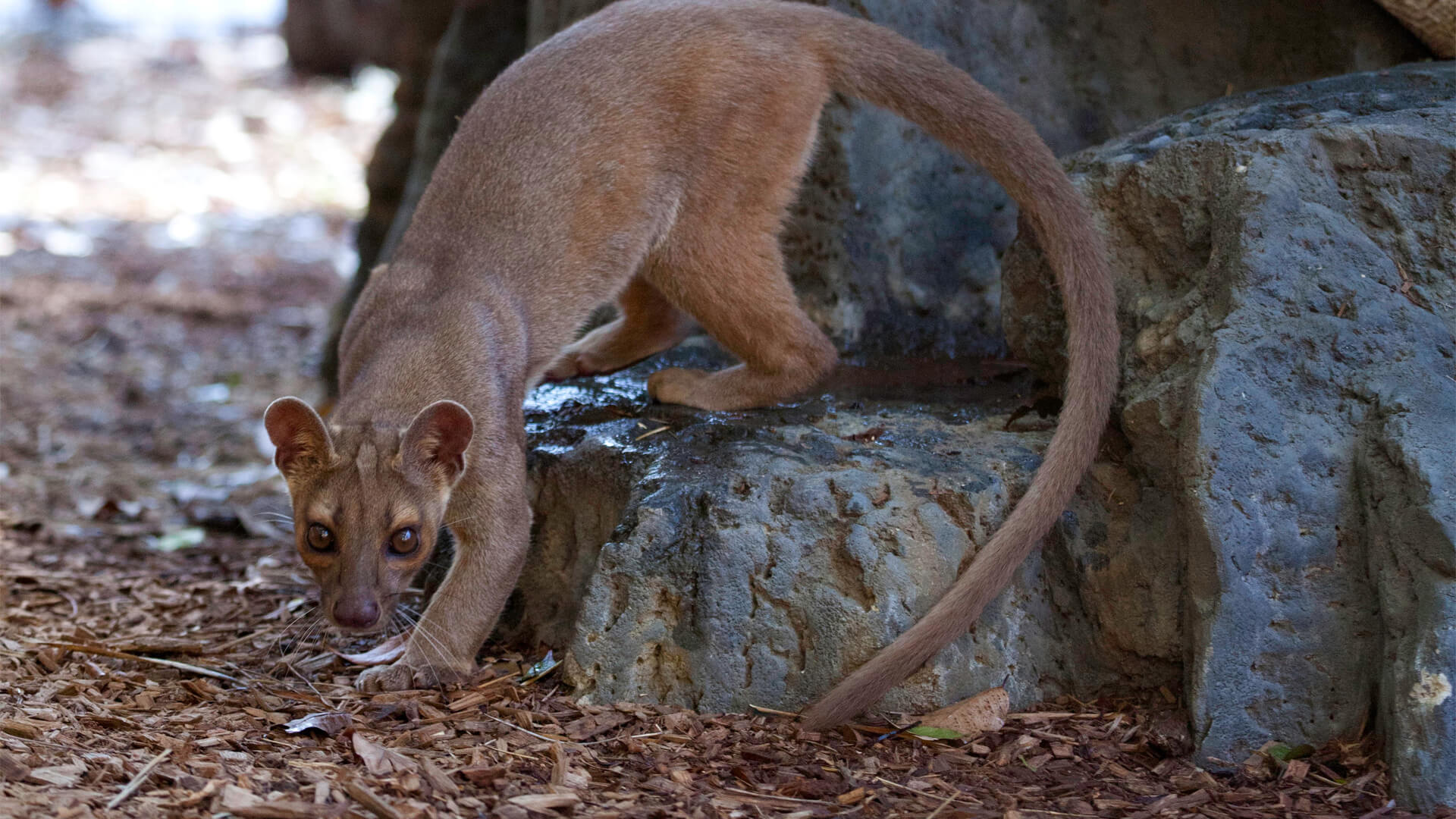
The fossa may look like a cat or monkey, but it actually belongs to the family Eupleridae. This family of carnivores are only found on the island of Madagascar, and their closest relatives are the mongooses. This species is the largest native predator of Madagascar, and lemurs make up approximately 50% of their diet.
Fossas are great climbers with the help of their feet and claws, and their tail helps them balance as they leap through the trees. However, as much time as fossas spend in the trees, they spend the same amount of time on the ground. When fossas walk on the ground, they walk flat-footed with their whole pad on the ground, called plantigrade. Fossas can cover long distances on the ground as well. One of the most important forms of communication for the fossa is by scent. Fossas have strong scent glands, and both males and females will scent mark during the breeding season. One of the favorite enrichments for our fossa is scent boxes. Our keepers will fill a cardboard box with a unique scent and give it to the fossa for her to play with and inspect. The population of fossas in the wild has greatly declined, with only 2,500 or less left in the wild. Deforestation has taken away much of the fossa's habitat. Additionally, fossas may catch diseases, such as rabies, that have been brought to Madagascar by introduced species like cats and dogs. There is much folklore surrounding the fossa, and many natives fear the fossa and kill it because they believe them to eat all their chickens.

Most people know the terms diurnal and nocturnal, but fossas are cathemeral- a fancy way of saying they are active during both the day and night with naps in between. So if our fossa is asleep, just check back after naptime is over.

Kristen
The ankles of the fossa are "reversible" and their claws are semi-retractable. These adaptations allow the fossa to go both up and down trees headfirst.
Madagascar
Forest
2.5 feet long | 2-foot long tail | up to 20 pounds
Lemurs, rodents, snakes, other small vertebrates
Humans
Claws and teeth
2–4 cubs on avg.
Vulnerable
Up to 20 years
